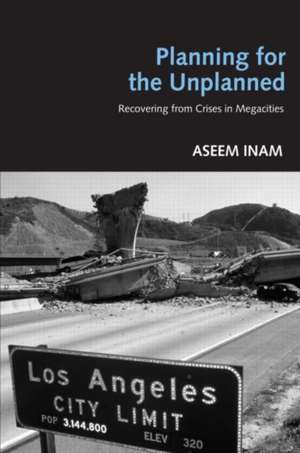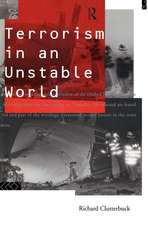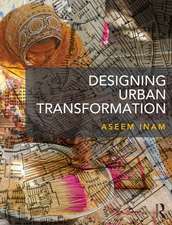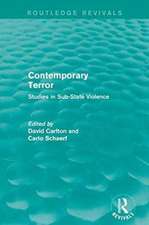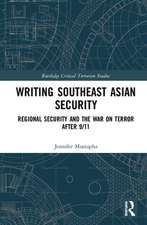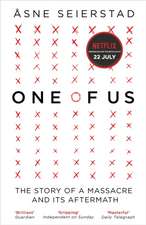Planning for the Unplanned: Recovering from Crises in Megacities
Autor Aseem Inamen Limba Engleză Paperback – 30 mar 2005
Preț: 130.75 lei
Preț vechi: 191.52 lei
-32% Nou
Puncte Express: 196
Preț estimativ în valută:
25.03€ • 27.19$ • 21.04£
25.03€ • 27.19$ • 21.04£
Carte tipărită la comandă
Livrare economică 22 aprilie-06 mai
Preluare comenzi: 021 569.72.76
Specificații
ISBN-13: 9780415951302
ISBN-10: 0415951305
Pagini: 262
Ilustrații: 20 b/w images, 11 tables and 14 halftones
Dimensiuni: 152 x 229 x 15 mm
Greutate: 0.48 kg
Ediția:New.
Editura: Taylor & Francis
Colecția Routledge
Locul publicării:Oxford, United Kingdom
ISBN-10: 0415951305
Pagini: 262
Ilustrații: 20 b/w images, 11 tables and 14 halftones
Dimensiuni: 152 x 229 x 15 mm
Greutate: 0.48 kg
Ediția:New.
Editura: Taylor & Francis
Colecția Routledge
Locul publicării:Oxford, United Kingdom
Notă biografică
Aseem Inam is Assistant Professor of Urban Planning at the University of Michigan in Ann Arbor. He has worked as an architect, urban designer, and planner in North America, Europe, and Asia. He has published on alternative forms of suburban development, and on more meaningful ways of designing our cities.
Recenzii
"This book offers insight into how and why planning strategies are effective in crisis situations, and broadens our view of public sector planning. Contrary to traditional views that perceive the public sector as rigid and slow at problem solving, Inam shows that it is the routine, bureaucratic structure of public agencies, based on familiar protocols and large-scale coordination, which actually enables rapid and successful response in times of crisis." -- Anastasia Loukaitou-Sideris, Professor and Chair, UCLA Department of Urban Planning
"[This is] an intelligently written book that addresses an important topic in a clear fashion...Inam's argument re-directs disaster planning, turning it from an 'exceptional case' to a process inherent in 'everyday' planning and policymaking." -- Robert A. Beauregard, Professor of Urban Policy, The New School University
"Inam's argument re-directs disaster planning, turning it from an 'exceptional case' to a process inherent in 'everyday' planning and policymaking." - Robert A. Beauregard, Professor of Urban Policy, The New School University
'There is much in this book that can benefit readers from the fields of urban studies, sociology, political science, urban planning, and public policy and planning, as well as professionals involved in planning, policy, and public administration' - Pamela.S.Showalter, Texas State University
"[This is] an intelligently written book that addresses an important topic in a clear fashion...Inam's argument re-directs disaster planning, turning it from an 'exceptional case' to a process inherent in 'everyday' planning and policymaking." -- Robert A. Beauregard, Professor of Urban Policy, The New School University
"Inam's argument re-directs disaster planning, turning it from an 'exceptional case' to a process inherent in 'everyday' planning and policymaking." - Robert A. Beauregard, Professor of Urban Policy, The New School University
'There is much in this book that can benefit readers from the fields of urban studies, sociology, political science, urban planning, and public policy and planning, as well as professionals involved in planning, policy, and public administration' - Pamela.S.Showalter, Texas State University
Cuprins
1. Planning for the Unplanned 2. Opportunity Strikes 3. Successful Planning in Mexico City 4. Successful Planning in Los Angeles 5. When Planning Institutions Fail 6. Routines, Comparisons, and Future Directions Postscript: Planning after 9/11 Bibliography Appendix: Research Methodology and Interview Questions
